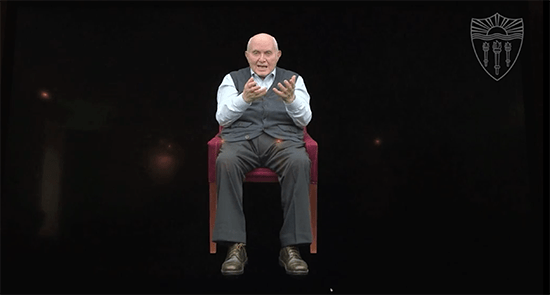In 'The Last Goodbye' at the Tribeca Virtual Arcade this month, the viewer wears a virtual-reality headset as a survivor recounts his ordeal at Majdanek. It’s an experience more authentic than 'Shoah,' its producer says.
In the spring of 2011, David Benson, found himself walking with his grandmother, Holocaust survivor Sidonia Lax, down the “black path” that once led to the crematorium at the Majdanek concentration camp in Poland. It was Lax’s fifth trip with the annual International March of the Living as a survivor, with the Builders of Jewish Education (BJE) teen delegation, his first as part of a large family contingent with the BJE Los Angeles adult group.
Holocaust Museum Houston Begins Four-Month Exhibit of New Dimensions in Testimony

New Dimensions in Testimony will be on display at Holocaust Museum Houston until May 30 as part of the museum’s artistic exhibit “A Celebration of Survival.”
Documenting History: Survivor of the Nanjing Massacre
New Dimensions in Testimony Testing at Museum of Tolerance
Engage with interactive Holocaust survivor testimonies from New Dimensions on Testimony at the Museum of Tolerance.
A Lesson in Technology and Humanity
New Dimensions in Testimony Begins Three-Month Installation at CANDLES Museum in Indiana
Pagination
- Previous page
- Page 2
- Next page